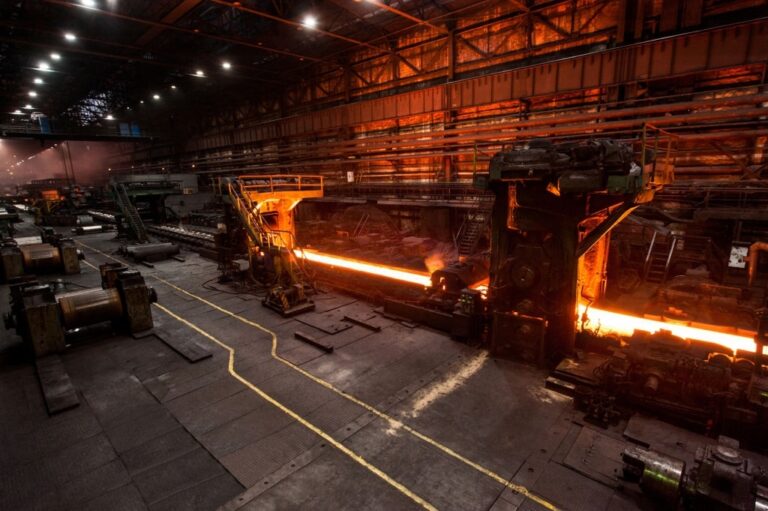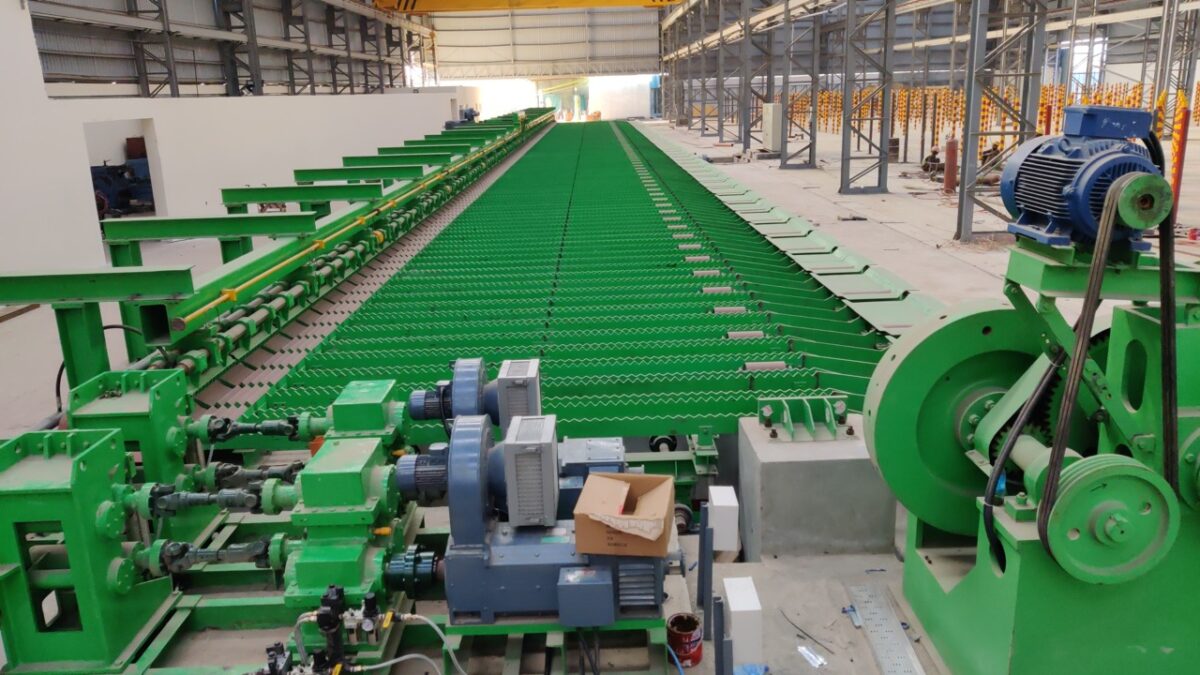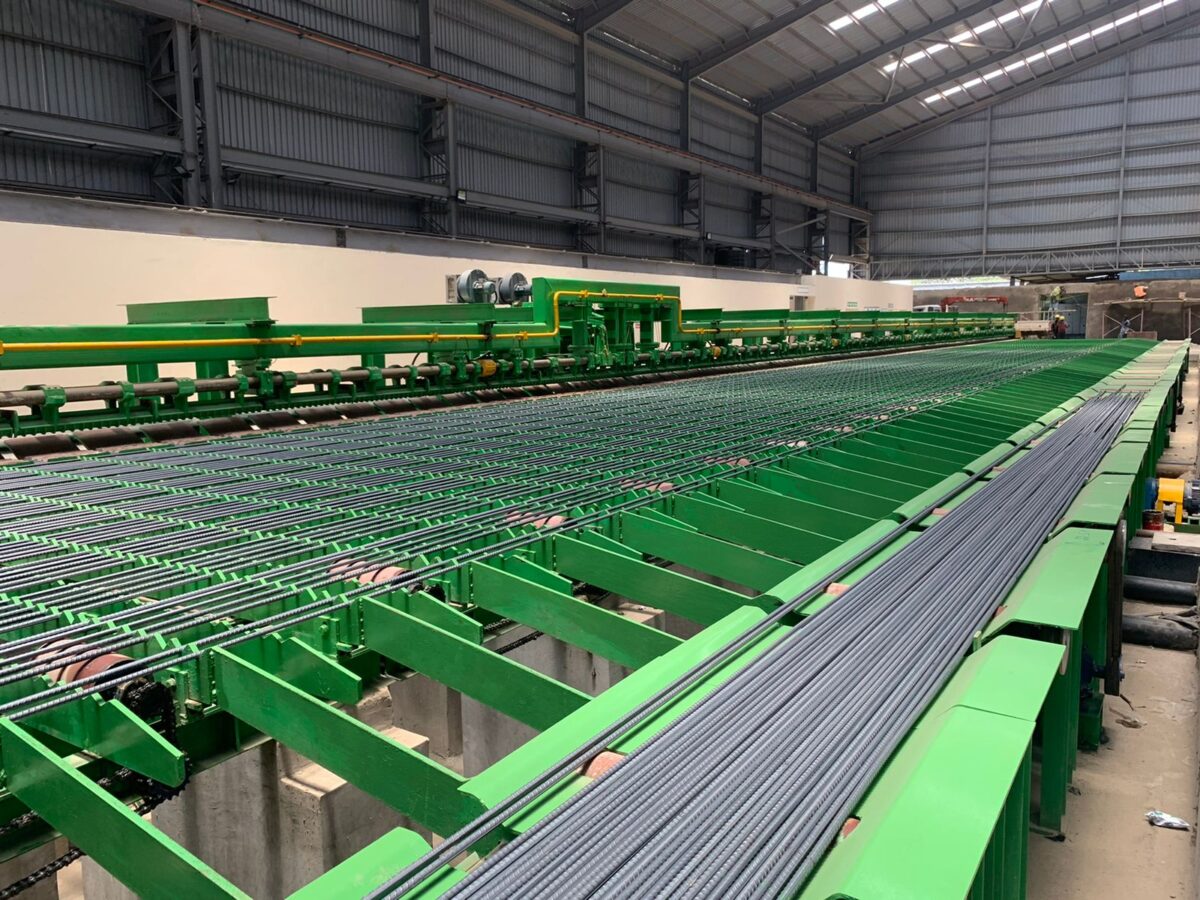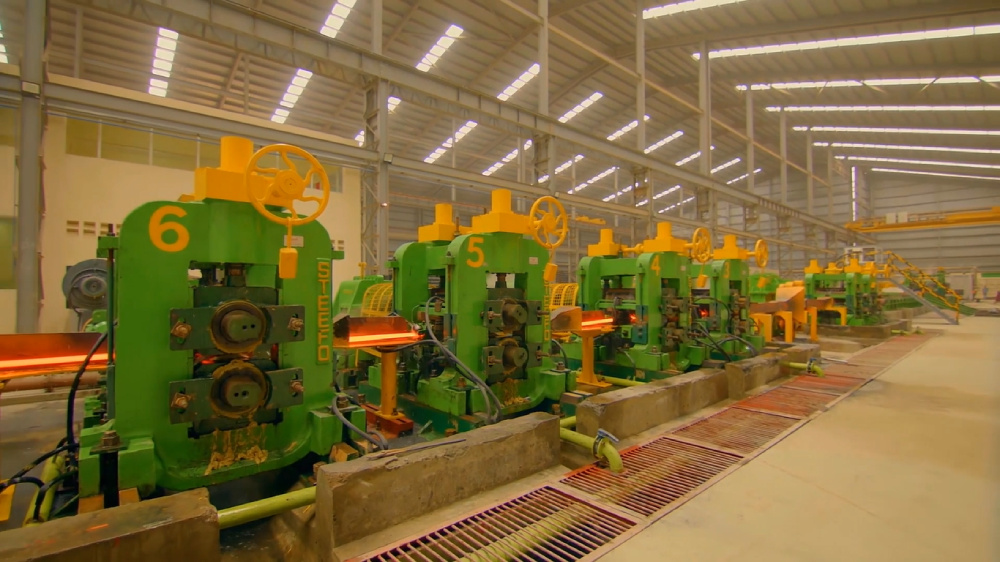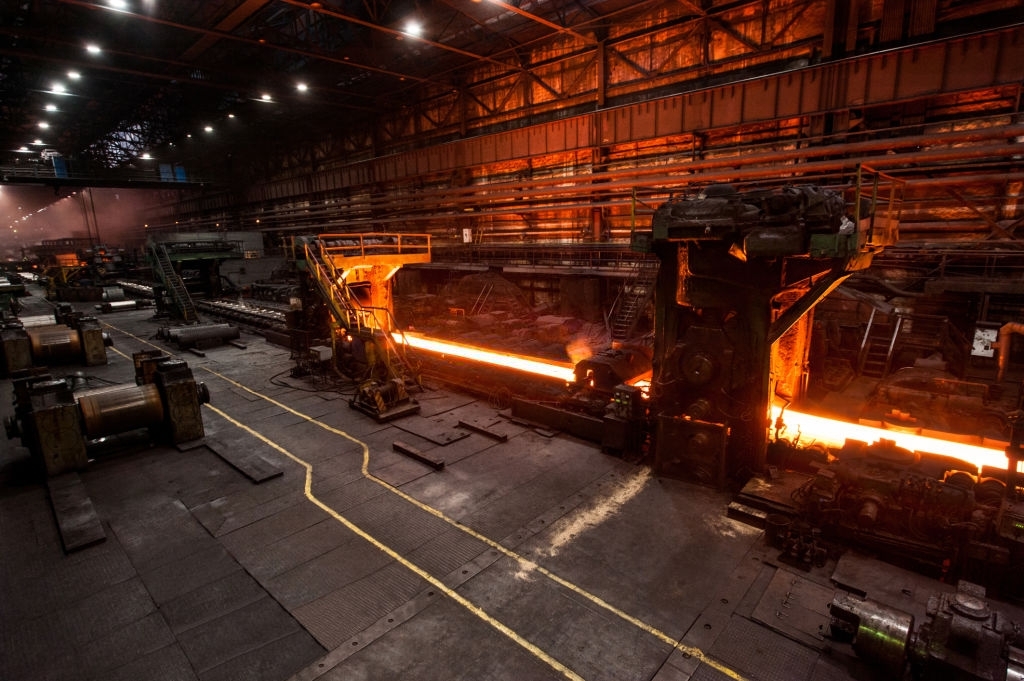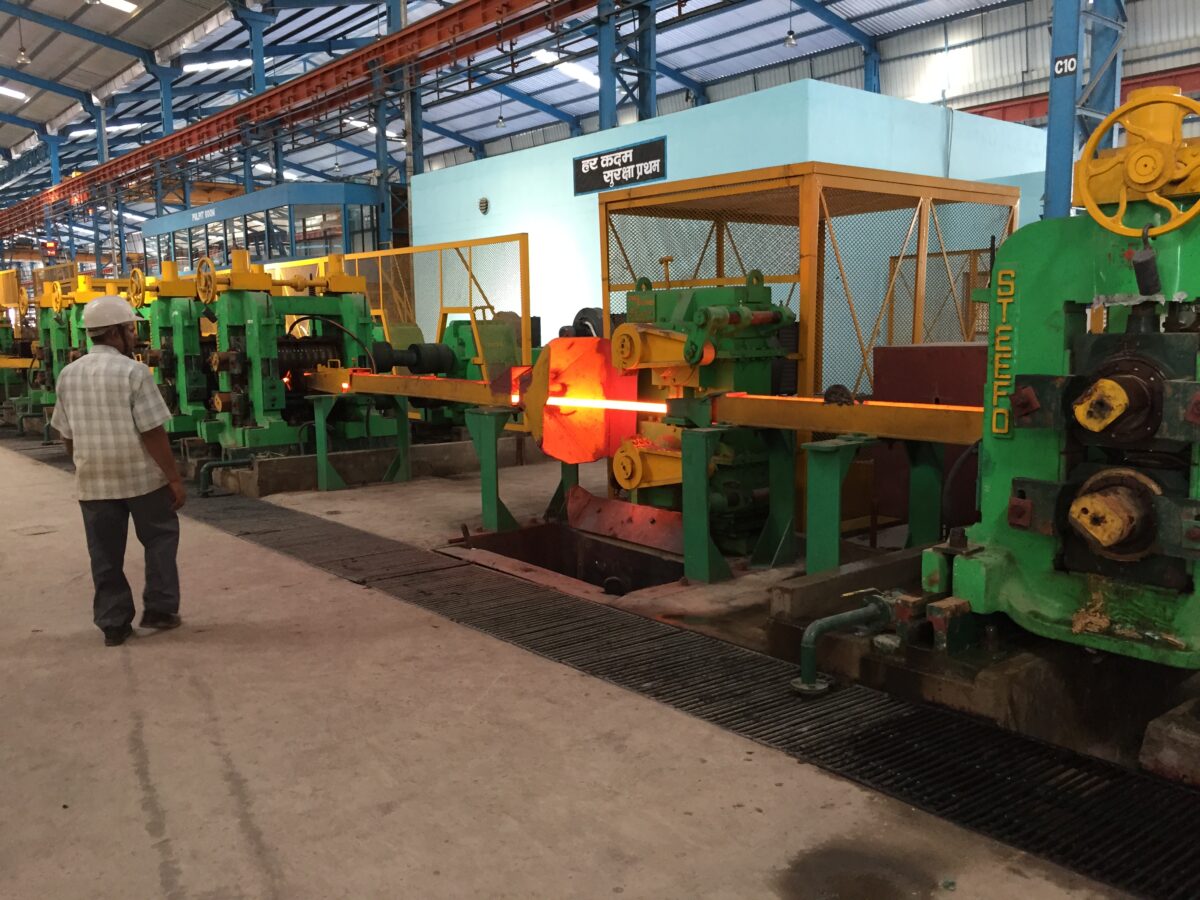In the competitive world of rolling mills, success is often defined by speed, efficiency, and the seamless orchestration of many moving parts. Whether you’re upgrading an existing facility or building a new TMT bar rolling mill from the ground up, choosing the right project execution model can make all the difference.
Turnkey solutions offer a compelling approach by providing a single point of responsibility, from concept to commissioning. Instead of juggling multiple contractors, vendors, and timelines, rolling mill operators can rely on an expert partner to handle everything under one roof. In this blog post, we explore the top 10 reasons why turnkey solutions are redefining project execution in the steel and metal forming industry.
10 Key Reasons to Choose Turnkey Solutions for Rolling Mills
1. End-to-End Project Ownership
Perhaps the most significant advantage of a turnkey solution is the luxury of one partner, one responsibility. From the initial layout design to the final commissioning of your rolling mill, everything is handled by a single, experienced provider.
This drastically simplifies communication and coordination—no more chasing different suppliers, trying to sync civil work with mechanical installations, or getting stuck in vendor blame games. Turnkey providers like The Steefo Group take full accountability for the project, ensuring there’s no ambiguity or finger-pointing when something doesn’t go as planned.
This single-window approach also helps minimise scope creep, a common pitfall in large industrial projects. When one partner owns the entire process, they’re better equipped to anticipate dependencies, mitigate risks early, and keep your rolling mill project on track.
2. Faster Time-to-Market
Time is money, especially in steel production. Delays in project execution can translate into lost market opportunities, idle resources, and mounting capital costs. With turnkey solutions, your project benefits from a streamlined execution model that significantly shortens the go-live timeline.
One of the biggest causes of delays in conventional project setups is poor coordination between multiple vendors. For instance, the mechanical installation may be complete, but electrical work could be stuck waiting for documentation or site readiness. With a turnkey partner, all these phases are pre-scheduled in a synchronised manner, meaning fewer gaps, faster transitions, and more predictable delivery.
The Steefo Group has perfected this coordination over decades, offering optimised delivery models tailored for rolling mills. Their well-oiled project management system ensures that site development, machinery supply, erection, and commissioning are all aligned to your production deadlines, without compromising quality.
3. Cost Optimisation Across the Board
Cost overruns are a frequent nightmare in rolling mill projects. But turnkey solutions can dramatically lower the risk. By bundling all services—engineering, procurement, manufacturing, installation, and training—under one umbrella, you get the benefit of economies of scale.
Your turnkey partner has stronger vendor relationships and greater bulk procurement leverage, translating to better material costs. More importantly, their in-house experience allows them to design for cost-efficiency, choosing the right layouts, optimal power consumption systems, and future-proof automation.
With everything pre-planned and coordinated, there’s also a significant drop in expensive rework, last-minute changes, or surprises during commissioning. This leads to more transparent budgeting, making it easier for businesses to plan ROI and manage financing more effectively.
4. Quality Control at Every Stage
A rolling mill is only as reliable as its weakest component, and when different contractors supply different systems, maintaining consistent quality becomes a challenge. Turnkey solutions solve this by ensuring uniform quality benchmarks are maintained across all project phases—mechanical, electrical, civil, and automation.
From design validation to manufacturing precision, from control panel wiring to PLC programming, each stage is aligned with predefined quality standards. Components are not just designed to fit but to work seamlessly with one another.
The best turnkey providers factory-test equipment before dispatch, dramatically reducing the chance of field failures. For example, The Steefo Group’s integrated testing protocols ensure that motors, gearboxes, and automation systems are calibrated and compatible before reaching your site.
5. Seamless Integration of Components
In high-speed TMT bar rolling mills, integration isn’t just a technical detail, it’s the backbone of production reliability. Mechanical components, drive systems, control software, and auxiliary infrastructure must work in perfect harmony to meet tight tolerances and ensure product quality.
Turnkey providers achieve this integration through cohesive design, engineering, and commissioning. They plan for interoperability right from the drawing board, using compatible systems that speak the same language—whether it’s for load-sharing motors, temperature control systems, or HMI interfaces.
This reduces post-installation troubleshooting, cuts down on unplanned downtime, and ensures your TMT bar rolling mill starts producing quality output from day one.
6. Customisation to Your Needs
Let’s bust a myth right now: Turnkey doesn’t mean off-the-shelf. The best turnkey providers understand that every rolling mill is unique—be it product output, space availability, regional material standards, or operational constraints.
Whether you need a high-speed TMT bar rolling mill to produce different grades of reinforcement bars or a setup tailored for niche profiles, turnkey partners can customise every aspect of the project. This includes:
- Mill layout and equipment sizing
- Material flow and process design
- Integration of advanced automation systems
Smart control panels, SCADA integration, and IoT-ready sensors can also be embedded during the design phase. This gives you a future-ready rolling mill that can adapt to evolving production demands and monitoring trends.
7. Lower Project Risk
Every steel plant owner knows the silent threats that lurk behind major projects: regulatory delays, engineering miscommunications, or last-minute design mismatches. With turnkey solutions, all these risks are consolidated under a single contract, reducing the potential for surprises.
Because one entity is responsible for design, engineering, supply, civil works, installation, and compliance, you eliminate the risk of fragmented accountability. That means:
- Fewer coordination errors between contractors
- Holistic approach to safety regulations and statutory approvals
- Reduced liabilities related to technical integration
The Steefo Group, for instance, employs strict risk assessment protocols during the planning and execution phases to ensure that nothing is left to chance, protecting your investment at every step.
8. Single Point of Contact
You don’t need five vendors updating you on five timelines. You need one project manager who knows everything, runs the show, and gives you precise, consolidated updates.
Turnkey execution gives you just that—a dedicated team and project lead who ensures that everything from machine procurement to on-site safety training stays in sync. This clarity in communication offers:
- Streamlined reporting and approvals
- Faster decision-making
- Quicker issue resolution if (or when) adjustments are needed
In high-capital ventures like rolling mills, faster course corrections can be the difference between success and missed deadlines.
9. Faster Commissioning & Training
Getting your rolling mill up and running isn’t just about turning the switch—it’s about making sure the equipment, people, and processes are ready to perform in harmony. That’s where turnkey providers truly shine.
Since the machinery is often pre-aligned, pre-wired, and tested before dispatch, installation time on-site is significantly reduced. What’s more, your workforce isn’t left figuring things out post-commissioning.
A complete turnkey solution includes:
- Operator and maintenance staff training
- Standard operating procedures (SOPs)
- Troubleshooting documentation and after-sales technical support
This means your TMT bar rolling mill can begin production sooner, with fewer hiccups and a higher confidence level in your plant’s performance from day one.
10. Future-Ready Setup for Scalability
Great turnkey solutions don’t just meet today’s needs, they plan for tomorrow’s growth. Scalability is designed into the system architecture from the beginning, allowing your business to add more product lines, new mill stands, or advanced digital monitoring without starting from scratch.
This includes:
- Modular mill designs
- Infrastructure capable of handling increased loads
- Plug-and-play automation components
With partners like The Steefo Group, this long-term vision becomes a reality. Their engineering blueprints are created with upgrades and expansions in mind, ensuring you won’t hit a technical ceiling when you want to scale up production.
Bonus Insight: Turnkey Solutions Aren’t Just for Greenfield Projects
Think turnkey is only for brand-new plants? Think again. The same model is now increasingly being used for brownfield upgrades—a critical need in regions where older rolling mills are underperforming or struggling with outdated technology.
Whether it’s a TMT bar mill in need of new stands or an obsolete rolling line requiring modern automation, turnkey retrofits offer:
- Minimal production disruption
- Compatibility with existing infrastructure
- Modernisation without massive demolition costs
The Steefo Group has completed numerous successful brownfield turnkey projects along with greenfield projects, proving that innovation doesn’t always mean starting over.
Conclusion
In a world where efficiency, agility, and performance are everything, turnkey solutions offer a smarter, safer, and more scalable way to execute rolling mill projects. From reducing costs and risks to ensuring faster commissioning and future-readiness, the turnkey model is tailor-made for businesses that want peace of mind and long-term ROI.
As one of the industry’s most trusted partners, The Steefo Group delivers comprehensive turnkey solutions for both greenfield and brownfield rolling mill projects. Whether you’re building a next-gen TMT bar rolling mill or upgrading an older facility, Steefo ensures your path to production is smooth, strategic, and scalable.
Looking to Build or Upgrade a Rolling Mill? Invest in Turnkey Solutions with The Steefo Group
Don’t let complexity stall your vision. Whether you’re setting up a new TMT bar rolling mill or breathing life into an outdated facility, The Steefo Group delivers complete turnkey solutions tailored to your goals. From design to commissioning, we handle every detail so you can focus on output, not obstacles.
With decades of global experience, Steefo brings engineering precision, fast-track execution, and future-ready automation under one roof. No finger-pointing. No fragmented workflows. Just one trusted partner transforming your concept into a fully functional, high-performance rolling mill.
Let’s build smarter, faster, and stronger—together.
Get in touch at +91 87589 98607 or at marketing@thesteefogroup.com to explore our turnkey expertise and discover how Steefo can streamline your next rolling mill project.
